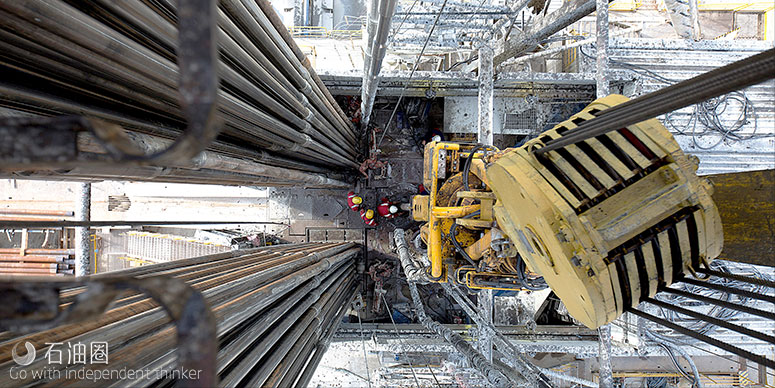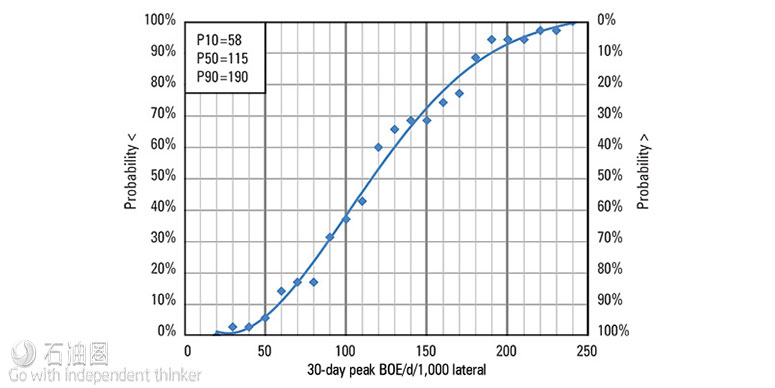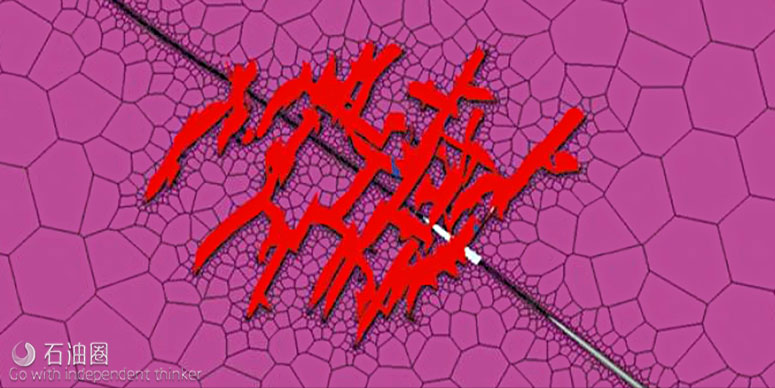Minimize decline rates and maximize ultimate recovery.
As operators continue to push into unconventional reservoirs, they bring a new understanding of the unpredictability and variability of shales. They understand that the methods and technologies that are successful in one play may not be in another.
Situated in the Midland sub-basin of the Permian Basin, the Cline Shale is an organic-rich play which, like other unconventional plays, also features a high degree of heterogeneity and complexity that requires a multidisciplinary approach to the entire completion process. The play—which sits above the Strawn formation and below the Wolfcamp formation and spans several Texas counties—has shown encouraging early results, with peak rates as high as 350 barrels of oil equivalent per day per 1,000 feet of lateral length.
The play is characterized by interbedded siltstones/sands, a gross thickness varying from 200 feet to 550 feet, porosities between 6 percent and 12 percent, and a reservoir pressure gradient around 0.6 psi per foot. The high clay content, which varies from 25 percent to 50 percent, can cause problems that affect fracture initiation, treatment execution, proppant embedment and the loss of conductivity in un-propped areas of the fracture.
These features and conditions make drilling, logging and effectively stimulating the nano-Darcy-permeability formation challenging and result in uneven production that can negatively impact long-term economic recovery. Results from a 30-day test of 21 wells (see Figure) show a five-fold range in productivity.
As development continues in the Cline play, sound engineering practices and a multidisciplinary workflow that integrates geology, petrophysics, drilling, geomechanical evaluation, reservoir simulation of complex fractures and advanced production techniques will be necessary to maximize fracture stimulation treatments. By facilitating preliminary fracture modeling to identify the optimal lateral landing point, the workflow helps ensure that the zones with the highest potential are contacted to maximize recovery. This leads directly to productivity gains.
An Integrated Workflow
An unconventional reservoir optimized completion (U-ROC) workflow uses a multidisciplinary approach to minimize decline rates and maximize ultimate recovery. It facilitates more effective vertical proppant distribution within the hydraulic fractures, while engineering initiation points in the wellbore. Identifying the best lateral landing point and steering to stay within it over the lateral drilling, for instance, can have a significant impact on the amount of payzone connected to the wellbore.The U-ROC workflow is being applied in the Cline, where operators have realized the value of going beyond a traditional high-tier pilot hole logging to determine the best approach to drilling and completion. Many are using logging-while-drilling (LWD) measurements or running open-hole or cased-hole wireline logs in the laterals.
The recovered data is used to create a staging and perforating advisor log, the first step in the U-ROC integrated workflow process to maximize recovery by improving reservoir contact on an intra-well basis. Stress variations along the lateral, for example, are evaluated using dipole sonic measurements, density/neutron measurements, and formation resistivities to place perforation clusters within like rock.Stages can also be grouped in like rock, which can improve stimulation effectiveness by equally distributing the stimulation across a stage.
Some open hole logs in Cline horizontal wells show stress differentials in one stage as high as 1,200 psi for the geometric staging of perforation clusters. This amount of stress differential results in some clusters receiving no stimulation, while the clusters taking fluid are over-stimulated. By using the perforating and staging advisor in combination with stress measurements, the differential value between clusters can be reduced to less than 100 psi.
In terms of actual production, studies from other unconventional basins, such as the Eagle Ford, have shown that geometric perforating strategies can produce from 64 percent or less of the perforation clusters.However, via the engineered staging and perforating advisor, this same Eagle Ford study has increased the average percentage of producing clusters from 64 percent to 82 percent. In the Permian Basin, the staging and perforating advisor has been shown to increase production as much as 35 percent by improving stimulation efficiency.
Designing the Stimulation Treatments
The next step of the U-ROC workflow is to design stimulation treatments based on new models considering fracture complexity. Complexity is a function of geomechanical properties— such as Young’s modulus, Poisson’s ratio, horizontal stress anisotropy and reservoir natural fracture density and azimuth. The increased use of microseismic monitoring of hydraulic fracturing treatments has shown that many, if not most, stimulations create complex fractures to varying degrees. The U-ROC workflow rigorously models complex fracture development using an unconventional fracture model (UFM) that responds to the vertical stress profile to predict the height growth and model, the interaction between the hydraulic fracture and the natural fracture network to model complexity development.
In tighter-spaced perforation cluster designs, the UFM can also calculate stress shadows between competing clusters within a stage and stage-to-stage stress shadows. Because understanding the proppant distribution in the complex network is important, both laterally and vertically, the UFM provides a proppant transport and fluid flow model. This is especially important in highly laminated formations such as the Cline, where it is necessary to prop several hundred feet containing pay. Without the ability to model this complexity and proppant distribution, operators must rely on trial and error to select a treatment, which can be a costly endeavor—the field is an expensive laboratory.
The drainage area of the complex fracture network created during stimulation is evaluated so that operators can determine the required spacing between laterals to maximize the recovery factor while effectively managing drilling costs. This helps to ensure that the acreage will not be over-drilled or under-drilled. To evaluate the drainage area, the U-ROC workflow provides a method for using microseismic fracture mapping to calibrate the complex fracture model and automatically move this calibrated solution into a numerical reservoir simulator with an unstructured grid to match production history and forecast recovery.
Reservoir Performance
Ultimately, reservoir performance is a function of stimulated reservoir volume in connection to the wellbore. Microseismic monitoring remains the best method of establishing boundary conditions on complex fractures, taking into consideration variables such as velocity model inputs, geophone fidelity and even location errors, which can affect the output. Microseismic data in the Cline suggest that complexity develops during hydraulic fracturing. It is important to understand the interaction between this production mechanism and the stimulation to further refine the stimulation design.
The UFM is gridded into a numerical reservoir simulator to refine the fracture design to improve expected reservoir performance (see Figure). The UFM also captures conductivity variations resulting from varying proppant distributions in the fracture or portions of the fracture that are not propped at all. The simulation takes into account any lab testing of the un-propped conductivity as a function of stress.
When the complex models are calibrated to both microseismic and production, a calibrated three-dimensional petrophysical and geomechanical model is created in which different stimulation treatments and their effects on production can be economically evaluated to optimize the completion strategy.
The lateral heterogeneity of the Cline Shale presents a clear example of why a one-size-fits-all solution cannot be applied across the entire play. As operators attempt to unlock the full value of this asset, using the integrated U-ROC workflow will allow them to devise design strategies that optimize reservoir contact, maximize production recovery and improve overall economics.

 石油圈
石油圈


